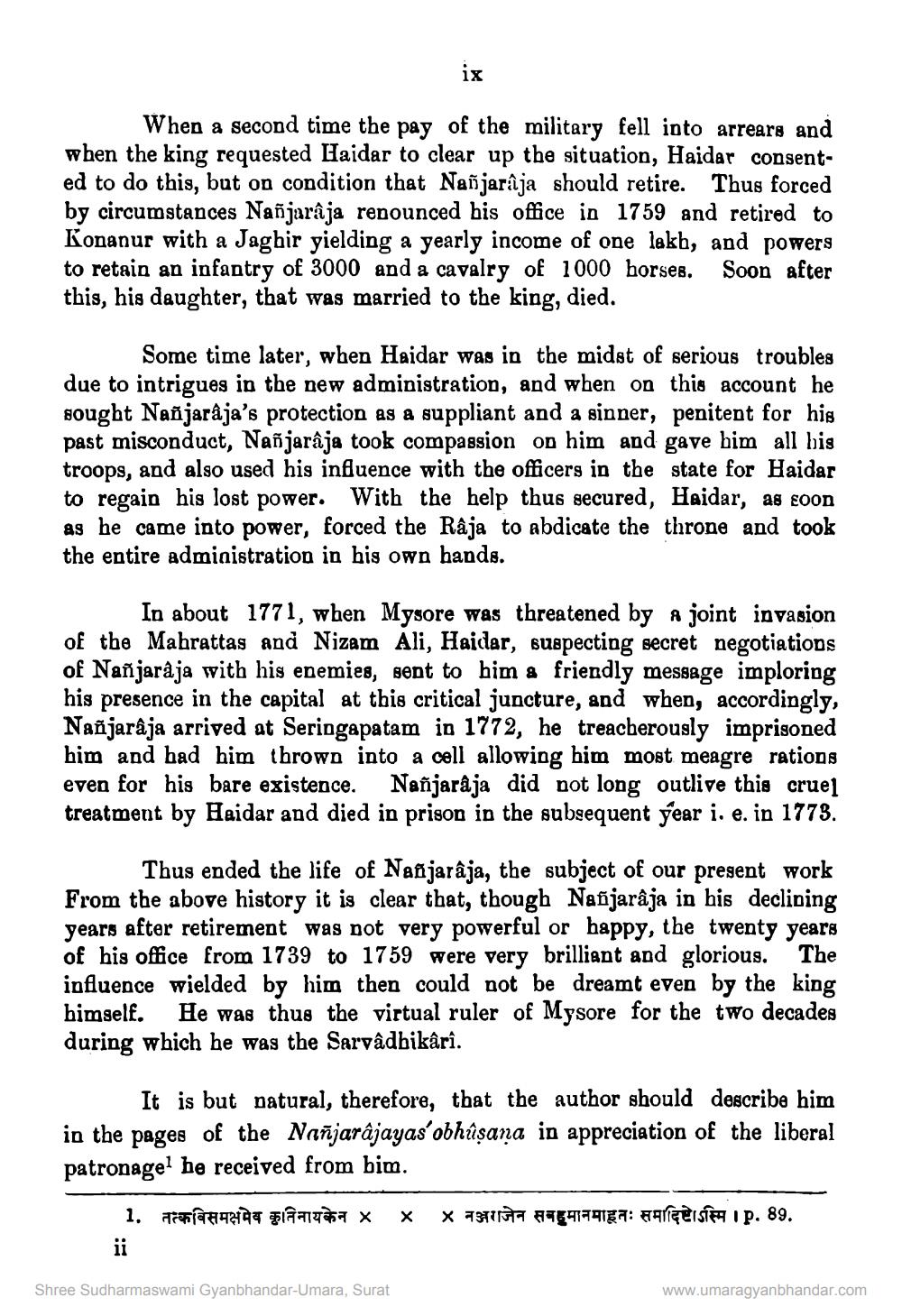________________
When a second time the pay of the military fell into arrears and when the king requested Haidar to clear up the situation, Haidar consented to do this, but on condition that Nañjarâja should retire. Thus forced by circumstances Nañjarâja renounced his office in 1759 and retired to Konanur with a Jaghir yielding a yearly income of one lakh, and powers to retain an infantry of 3000 and a cavalry of 1000 horses. Soon after this, his daughter, that was married to the king, died.
Some time later, when Haidar was in the midst of serious troubles due to intrigues in the new administration, and when on this account he sought Nañjaraja's protection as a suppliant and a sinner, penitent for his past misconduct, Nañjarâja took compassion on him and gave him all bis troops, and also used his influence with the officers in the state for Haidar to regain his lost power. With the help thus secured, Heidar, as soon as he came into power, forced the Râja to abdicate the throne and took the entire administration in his own hands.
In about 1771, when Mysore was threatened by a joint invasion of the Mahrattas and Nizam Ali, Haidar, suspecting secret negotiations of Nanjaraja with his enemies, sent to him a friendly message imploring his presence in the capital at this critical juncture, and when, accordingly, Nañjarâja arrived at Seringapatam in 1772, he treacherously imprisoned him and had him thrown into a cell allowing him most meagre rations even for his bare existence. Nañjarâja did not long outlive this cruel treatment by Haidar and died in prison in the subsequent year i. e. in 1773.
Thus ended the life of Nanjarâja, the subject of our present work From the above history it is clear that, though Naħjarâja in his declining years after retirement was not very powerful or happy, the twenty years of his office from 1739 to 1759 were very brilliant and glorious. The influence wielded by him then could not be dreamt even by the king himself. He was thus the virtual ruler of Mysore for the two decades during which he was the Sarvâdbikârî.
It is but natural, therefore, that the author should describe him in the pages of the Nañjarâjayas'obhứşana in appreciation of the liberal patronage? he received from bim.
1. Achhanda 5171449 x x x artista #9997418a: FANTEISIEH I p. 89.
Shree Sudharmaswami Gyanbhandar-Umara, Surat
www.umaragyanbhandar.com




